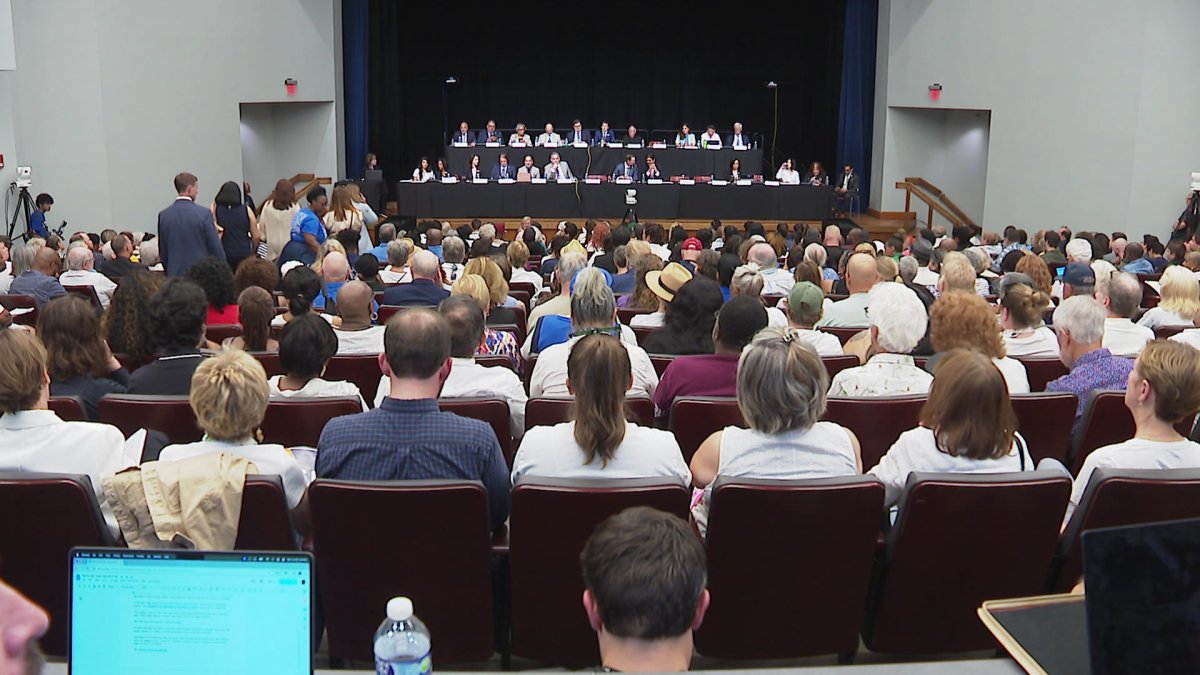State lawmakers were in Arlington Monday to hear from Texans on a proposal to redraw the state’s congressional voting maps.
Congressional maps are typically redrawn every 10 years after new census data is released. But President Donald Trump asked the Texas GOP to redraw the maps early to try to find five more Republican seats, making it harder for Democrats to regain the majority in the midterm elections in November 2026.
The GOP currently holds 25 of the 38 seats from Texas.
Texas Gov. Abbott added redistricting to the special session earlier this month. He said he did so because of “constitutional concerns raised by the U.S. Department of Justice” that four Democratic congressional districts were unconstitutional racial gerrymanders. Texas Attorney General Ken Paxton told the DOJ that the Texas legislature did not pass race-based electoral districts and that while the districts were created “to maximize Republican political advantage,” they were drawn race-blind.
In interviews afterward, Abbott said he believed the current maps would hold up in court but supported looking into redrawing them. After Texas lawmakers last redrew the maps in 2021, the average victory rate for incumbent Republicans in Congress went from 26% to 41%.
Hundreds turned out for a public hearing on redistricting Monday night on the campus of the University of Texas at Arlington. The public hearing was the third and final regional hearing with a bipartisan group of Texas House members. The Texas Senate held a virtual hearing in Austin on Tuesday.
Those in opposition argued that redrawing the maps with more GOP support would reduce voting power for minorities and said they believed the state’s democracy was being harmed in a process taking place behind closed doors. They said they were concerned that no redrawn maps had been shown to the public or the bipartisan committee yet.
“They do not deserve a map drawn behind closed doors that allows officials to choose their constituents,” said Elsie Cook Holmes, with Delta Sigma Theta sorority.
Without maps to show the public at the hearing, Texas Sen. Royce West, D-Dallas, said the hearing felt like legislators were checking a box rather than having a hearing with substance that informs the public about how the districts would be redrawn. West questioned whether more regional public hearings would be held to discuss the maps after they had been released.
State Rep. Sylvia Garcia, D-Houston, spoke before a cheering crowd at UTA, telling the panel they should be in Austin working on legislation to help Central Texas flood victims and not angling for more political power.
“We should not be here today. You should be back at the Capitol passing legislation for victims of the Hill County flooding,” Garcia said.
People, including Rich Stoglin, president of the Frederick Douglass Republicans of Tarrant County, spoke in favor of redistricting.
“As a Black American, Afghanistan veteran, a retired department head of the US Department of Justice, I strongly support the Republican redistricting,” Stoglin said.
Some Democratic committee members called for the Department of Justice to be subpoenaed to appear before them to explain the memo stating that four Democratic districts were unconstitutional, the memo Abbott said led to redistricting being added to the special session and the one Paxton said was in error.
While Democratic members of the House who were present Monday night said why they opposed the maps, none of the Republican members present said why they supported redistricting at this time.
In a dialogue with West, State Rep. Joe Moody, D-El Paso, told the assembled crowd that just because the governor added redistricting to the special session, the legislature was under no obligation to hold hearings or take a vote on the matter.
The 30-day special session ends Aug. 20. The Texas governor can call as many special sessions as he likes and is the only one to set the agenda. So, if redistricting is not passed before the session ends, Abbott can call session after session to discuss the issue.

